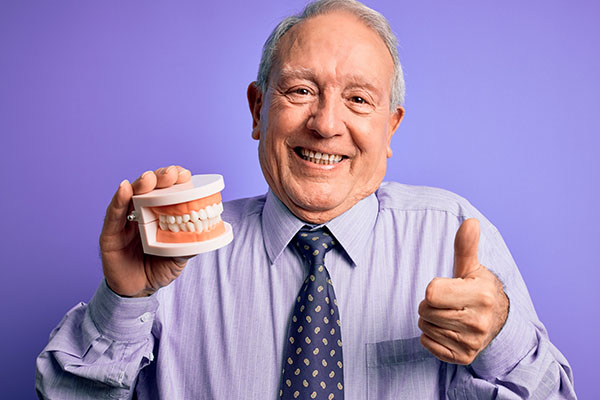 Thanks to advanced dental restorations, tooth loss is not the inevitable outcome of decay or damage that it once was. Restorations — including fillings, crowns, bridges, and implants — are designed to restore or replace damaged tooth structures or to prevent the advancement of decay. Many restorations can also improve the appearance of a patient’s smile while improving functionality. If you need a dental restoration to save a tooth, you have several options.
Thanks to advanced dental restorations, tooth loss is not the inevitable outcome of decay or damage that it once was. Restorations — including fillings, crowns, bridges, and implants — are designed to restore or replace damaged tooth structures or to prevent the advancement of decay. Many restorations can also improve the appearance of a patient’s smile while improving functionality. If you need a dental restoration to save a tooth, you have several options.
Dental restorations for damaged teeth
When a tooth is severely damaged, a dentist may attempt to save it through one of several types of restorations. Some restorations are more common than others.
Dental crowns
Dental crowns are a restoration that covers the entire natural crown of the tooth. Crowns become necessary when the tooth is so decayed that it cannot be sufficiently restored with a standard filling. Before placing a crown, the dentist will remove the decayed portion of the tooth. The dentist may also have to shave down the tooth to ensure that the restoration fits evenly and snugly around it. Crowns come in various materials, including silver, gold, resin, porcelain, and ceramic.
Inlays and Onlays
Inlays and Onlays are somewhat new types of dental restorations that provide a happy medium between fillings and crowns. An inlay is an indirect restoration that a dentist custom-makes outside of the mouth to fill a cavity that is between the cusp of the tooth. An Onlay is also custom-made, but it differs from an inlay in that it covers the cusp of the tooth. Both types of restorations can be made from metal, composite material, or tooth-colored porcelain.
Bridges
Bridges are a restoration option designed to replace one or more missing teeth. Bridges can be either fixed or removable. The setup consists of a false tooth or set of teeth that “bridges the gap,” so to speak, between two healthy teeth.
A bridge can be either fixed or removable. Both removable and fixed bridges utilize crowns that clip to the teeth adjacent to the gap. However, they differ in that a fixed bridge is cemented into place, whereas a removable bridge remains loose for the patient to take in and out as necessary.
Implants
Dental implants are one of the most common dental restoration options for missing teeth, as implants look, function, and feel like natural teeth. Implants consist of a titanium post that the dentist places into the bone socket where the natural tooth root should be. The jaw bone and implant then fuse via a process called osseointegration to create an immovable structure to which the dentist can attach the abutment. Once the abutment is in place, the dentist can attach the crown.
Implants, if properly cared for, have the potential to last a lifetime. They also provide the jawbone with much-needed support and stimulation, both of which help to preserve the patients’ facial structure and oral health.
Conclusion
There are several types of dental restorations that dentists perform, each of which serves a unique purpose and provides unique benefits. Patients who want to preserve the health of their teeth or smiles should discuss restoration options with a local dentist.
Request an appointment or call Frankford Dental Care at 215-302-1746 for an appointment in our Philadelphia office.
Recent Posts
A broken tooth is a common dental issue that fills most people with dread, especially when the crack is near the front of the mouth. Front teeth fractures are quite common among children, teenagers, and young adults. Fortunately, a dentist can recommend various repair or replacement options for damaged front teeth to help patients resume…
Dental restorations have been used for thousands of years. In fact, a 2012 article published by The New York Times details the discovery of a 6,500-year-old human jawbone. Considered the earliest evidence of dental fillings, it had beeswax in one tooth, which researchers believe was to ease the pain of a crack. These days, restorations…
Crowns are commonly used in dental restorations. A crown is a cap shaped like a tooth but hollow in the middle. It fits over a natural tooth that has to be prepared first. Depending on the issue it is correcting, a crown can be used by itself or as a component of another restoration technique.Teeth…


